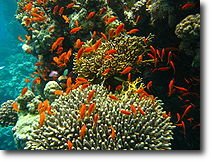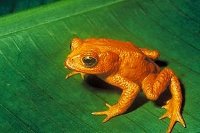Biosafety Protocol 2000
Author and Page information
This print version has been auto-generated from https://www.globalissues.org/article/175/biosafety-protocol-2000
A Biosafety Protocol meeting was hosted in Montreal, Canada January 24, 2000 to January 28, 2000. Compared to the fiasco of 19991, in 2000, there was a somewhat successful2 treaty to regulate the international transport and release of genetically modified organisms to protect natural biological diversity.
The treaty allows the labeling of products that have been developed from biotech organisms. While mandatory labeling has not been required, products will say that they "may contain" genetically modified ingredients. It also permits countries to block the entry of genetically modified organisms if there is "reasonable doubt" that there could be risks to public health or the environment.
According to the previous link, the protocol "marks the first time nations have agreed on an attempt to prevent environmental problems before they begin."
In general, this sounds very positive, as precautionary measures are permitted, over trade priorities. However, as this link3 mentions, farmers from developing countries are still at risk from this technology, unless accountability and liability of the corporations promoting the technology can be guaranteed. As history has shown, that will be a tough battle!
There are still many weaknesses in the protocol4. For example, once foods are processed in to shelf products, they won't contain any labeling. Disputes may need to be resolved at the WTO. Again, USA, who is not a signatory to the underlying pact, was able to influence the outcome largely, via Canada, Argentina and others who stand to gain from genetically modified foods. (The previous link provides many examples of the weaknesses.)
It seems fairly absurd that we had to fight over whether or not we want to control an import (or export) that could pose health risks. Or, in this case, where we are currently not sure that there could be harm, yet the potential does exist, it seems equally strange that we needed to fight for the right to be cautious. Yet, this is precisely what the complaints were about last year:
"The Biosafety Protocol is not a trade agreement. It aims to protect people and the environment from a technology whose risks and impacts are poorly understood. Subordinating the Protocol to current "free trade" procedures will not only result in a weak agreement, but could seriously undermine food security and have a potentially devastating effect on biodiversity."
The concerns that people have are very natural and yet "free" trade proponents (and I refer to the current models of free trade, which are far from free6) ridicule such people often claiming that the protesters don't know what is best for them! The biotech industry is afraid of the costs7 involved in ensuring safety as this is a threat to their bottom line and ability to trade "freely" without such annoying rules which get in the way!
As summarized by this article8 from the World Development Movement, "there are four main areas where developing country demands must be taken seriously if we are to ensure that international rules on GMOs are not hijacked by the US on behalf of its biotechnology industry:" (which still apply, even after the treaty signed in Montreal, as it will be an on-going effort to ensure that the concerns are dealt with)
- The Right to Information
- The Right to Say "No"
- Relationship with the World Trade Organisation -- The Biosafety Protocol aims to protect people and the environment from a technology whose risks and impacts are poorly understood. The Biosafety Protocol should take precedence over the provisions of international trade rules, should conflicts arise between the two agreements
- Liability -- Companies exporting GMOs should be strictly liable in the event of problems that arise and should provide adequate compensation for any damages to health, the environment or livelihoods.
For more about this biosafety convention, OneWorld has a section9 to cover the event.
For a backgrounder to the previous year's protocol (and the failure of it), check out this web site's section10 on the 1999 Biosafety Protocol.
0 articles on “Biosafety Protocol 2000” and 2 related issues:
Biodiversity
 The variety of life on Earth, its biological diversity, is commonly referred to as biodiversity. The number of species of plants, animals, and microorganisms, the enormous diversity of genes in these species, the different ecosystems on the planet, such as deserts, rainforests and coral reefs are all part of a biologically diverse Earth. Appropriate conservation and sustainable development strategies attempt to recognize this as being integral to any approach. In some way or form, almost all cultures have recognized the importance of nature and its biological diversity for their societies and have therefore understood the need to maintain it. Yet, power, greed and politics have affected the precarious balance.
The variety of life on Earth, its biological diversity, is commonly referred to as biodiversity. The number of species of plants, animals, and microorganisms, the enormous diversity of genes in these species, the different ecosystems on the planet, such as deserts, rainforests and coral reefs are all part of a biologically diverse Earth. Appropriate conservation and sustainable development strategies attempt to recognize this as being integral to any approach. In some way or form, almost all cultures have recognized the importance of nature and its biological diversity for their societies and have therefore understood the need to maintain it. Yet, power, greed and politics have affected the precarious balance.
Read “Biodiversity” to learn more.
Environmental Issues
 Environmental issues are also a major global issue. Humans depend on a sustainable and healthy environment, and yet we have damaged the environment in numerous ways. This section introduces other issues including biodiversity, climate change, animal and nature conservation, population, genetically modified food, sustainable development, and more.
Environmental issues are also a major global issue. Humans depend on a sustainable and healthy environment, and yet we have damaged the environment in numerous ways. This section introduces other issues including biodiversity, climate change, animal and nature conservation, population, genetically modified food, sustainable development, and more.
Read “Environmental Issues” to learn more.
Author and Page Information
- Created:
- Last updated:
 Global Issues
Global Issues